| Title | Ala Kahakai |
| Park Code | alka |
| Description | Established in 2000 to preserve, protect and interpret traditional Native Hawaiian culture and natural resources, Ala Kahakai National Historic Trail is a 175-mile corridor encompassing a network of culturally and historically significant trails.... |
| Location | |
| Contact | |
| Activities |
|
| Entrance fees |
|
| Campgrounds | Count: 0
|
| Places | Count: 26
1871 Trail IntroductionThe 1871 Trail is a section of the larger Ala Kahakai National Historic Trail, a 175-mile long trail corridor on Hawaiʻi Island. 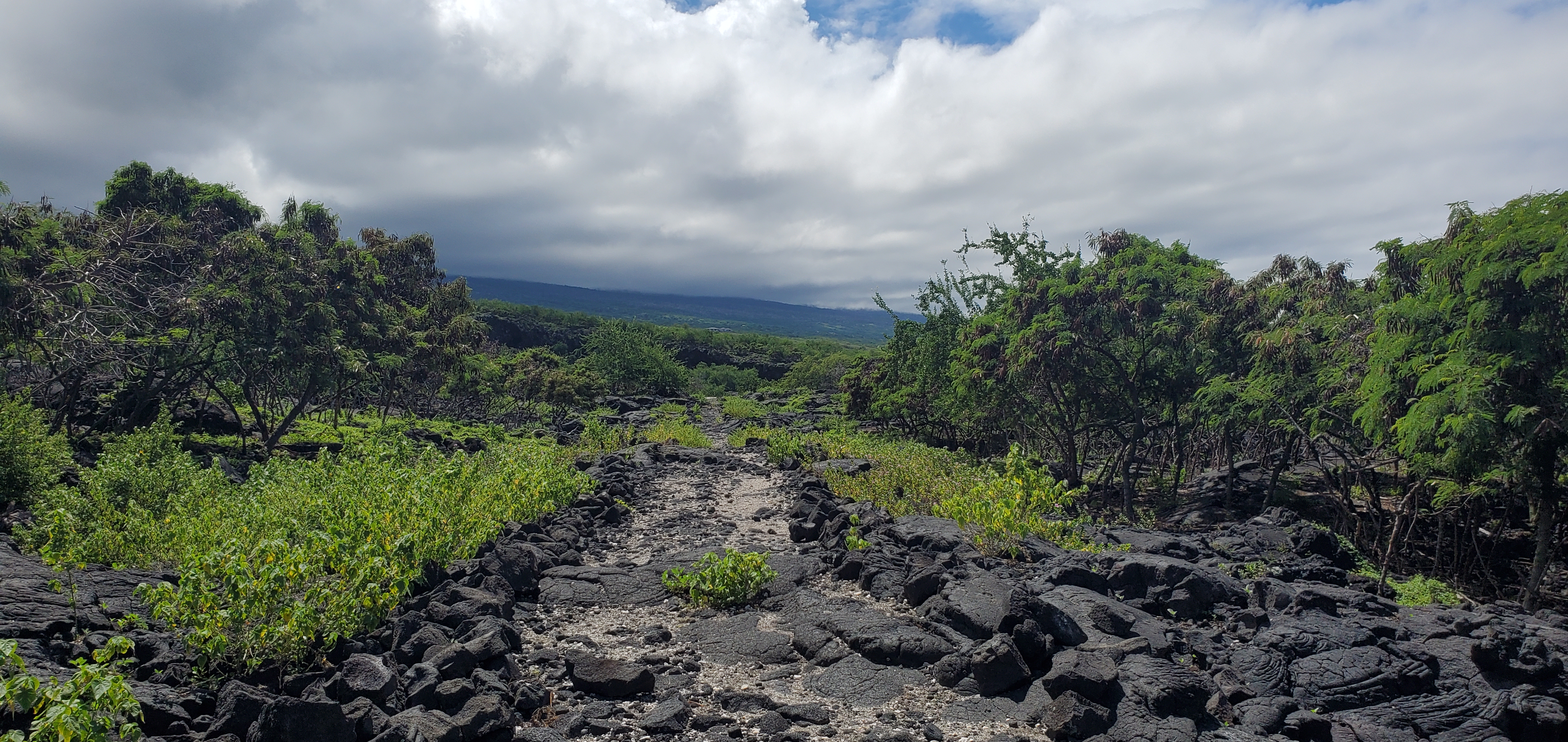
1871 Trail Tour ConclusionThe journey down the 1871 trail and into the past makes us wonder what knowledge or lessons from the past can we apply to our world today? 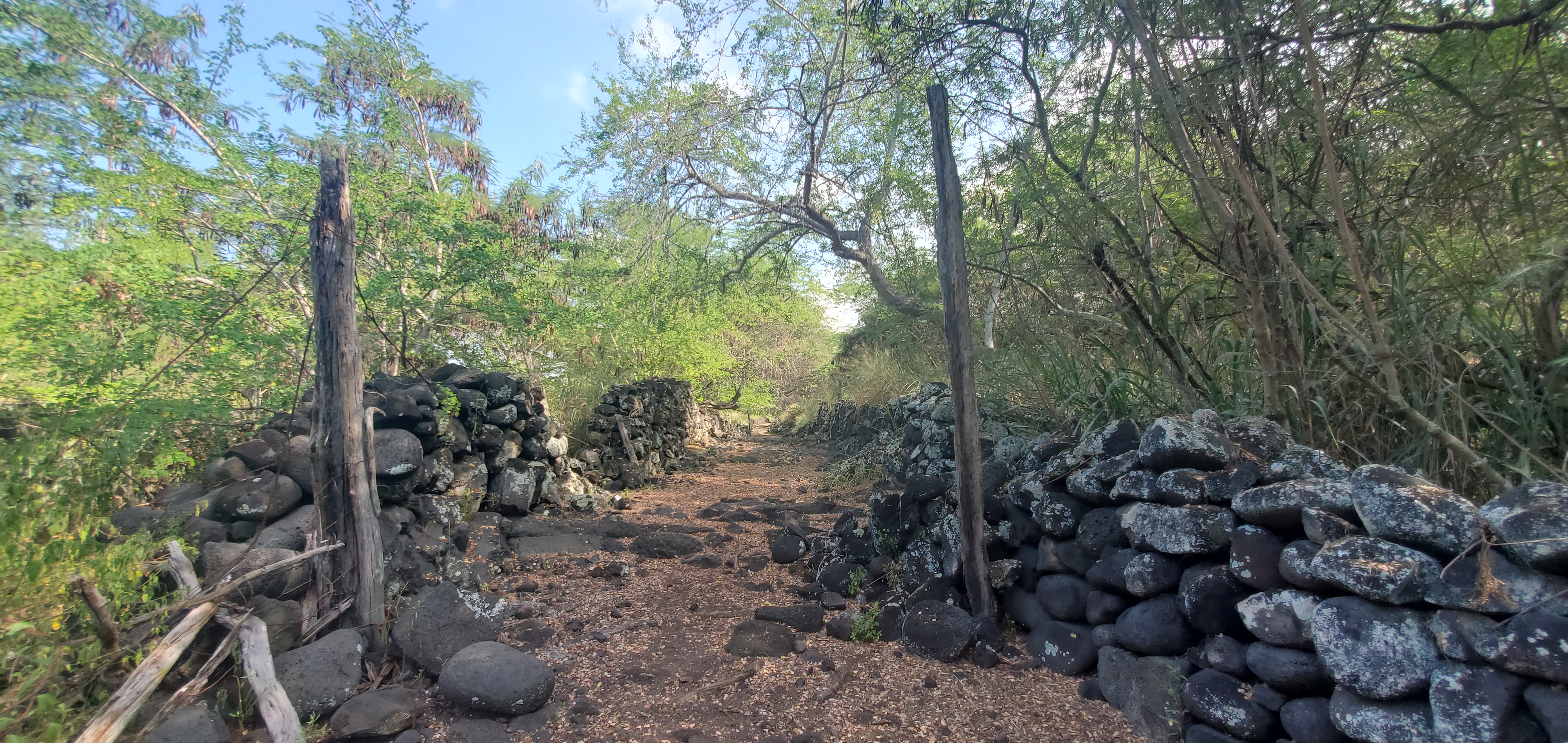
1871 TrailheadThe rugged lava shoreline of the South Kona coast beckons you to explore the backcountry trails of the park. Have you ever imagined visiting a historic abandoned Hawaiian village? Come and experience this special and unique area. Step back in time. The ocean will whisper ancient stories from the past as you pass by places used by people of long ago. 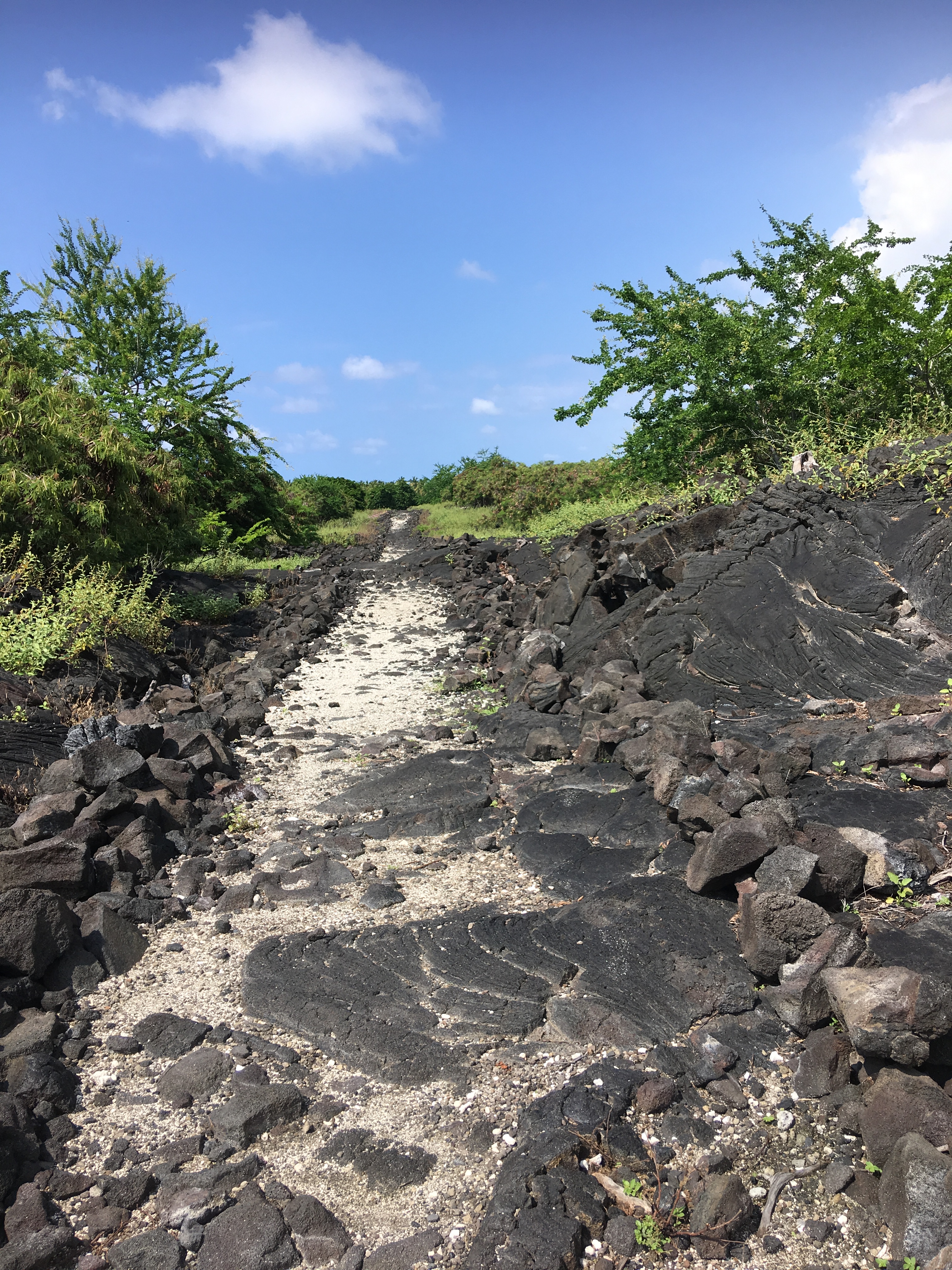
A - Hōnaunau HoluaCan you imagine sledding down a lava rock slope on a sled no wider than 12 inches? This hōlua was used by the aliʻi (royalty) in the area to prove their agility and bravery as they sledded down the steep slope. 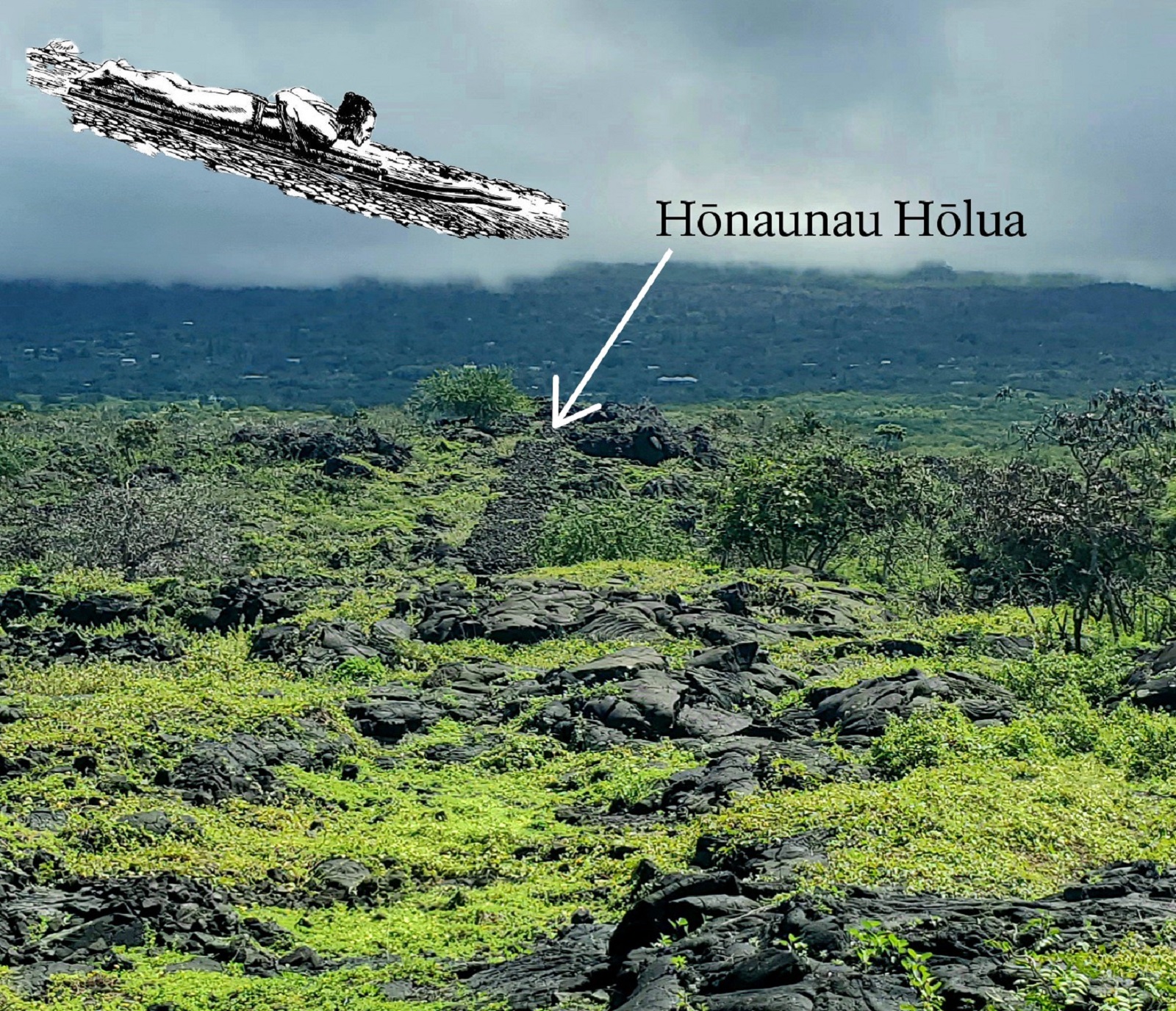
Ala Kahakai at Puʻukoholā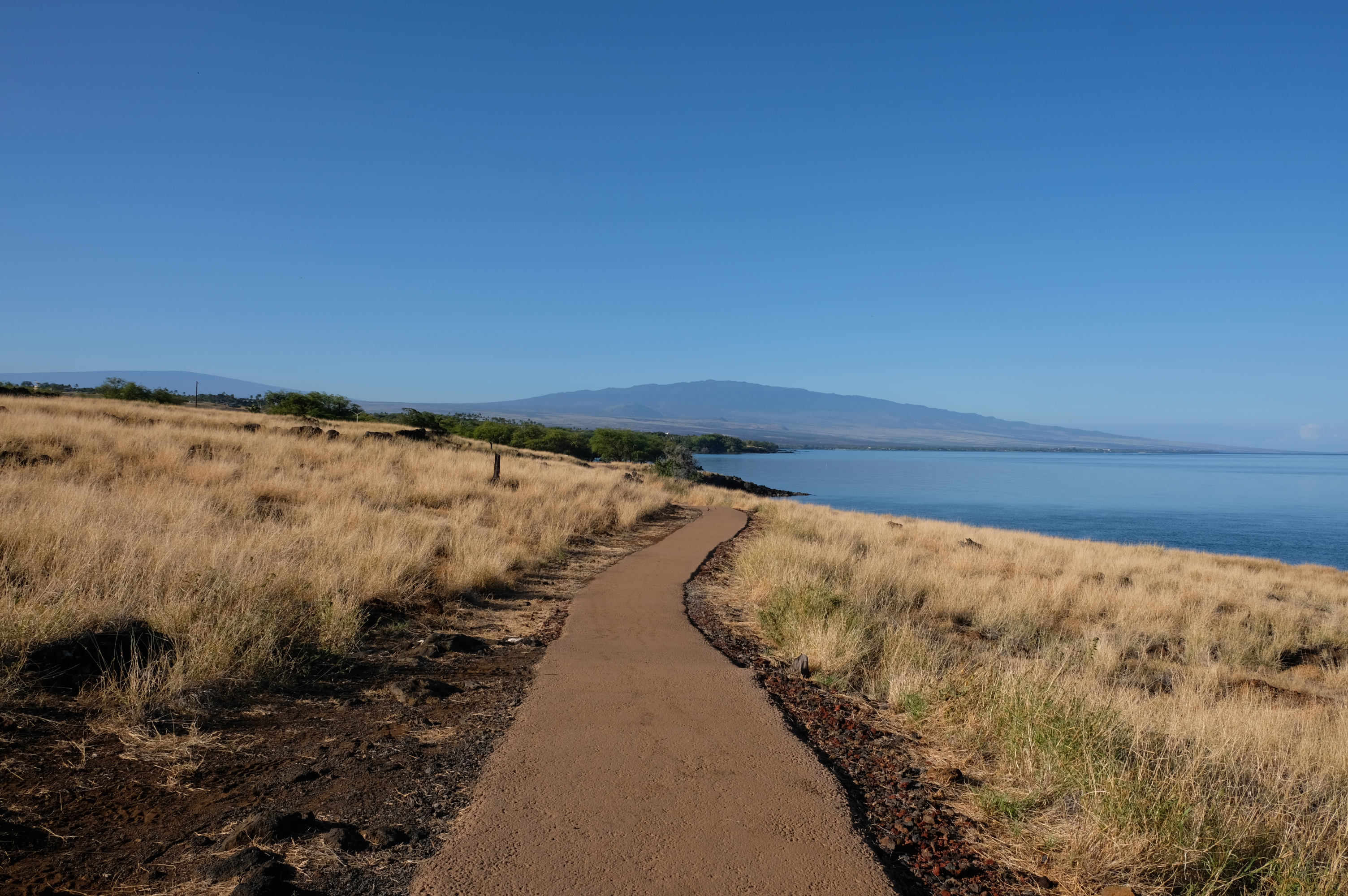
B - Kōnane PapamūAn ancient kōnane playing surface, or papamū, sits on the side of the 1871 trail. One of many along the trail and coastline. 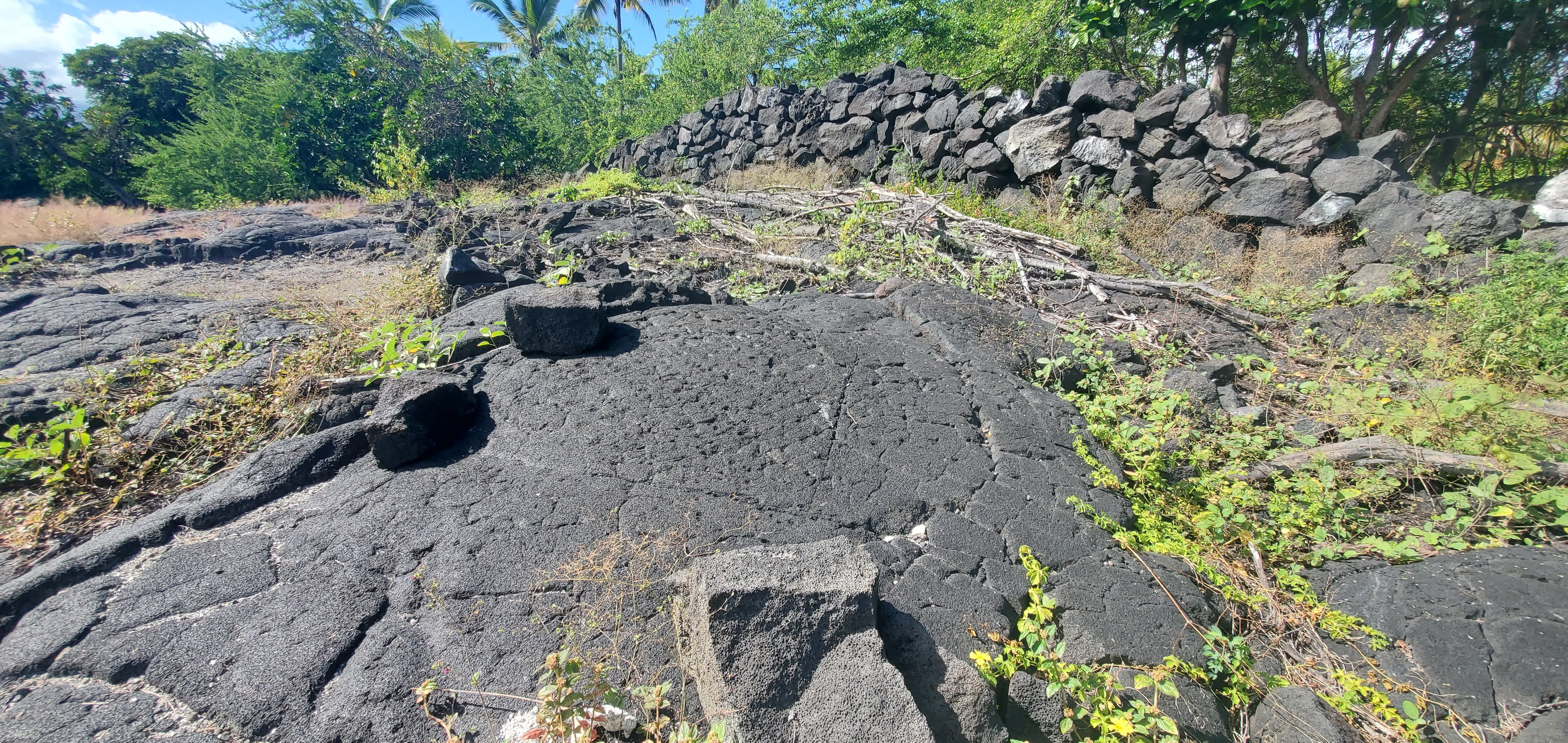
C - Stone Walls & CurbstonesThe stone walls of historic enclosures aren't the only thing that lines the trail at this location. Curbstones along the edges of the trail help delineate the trail for pack animals. 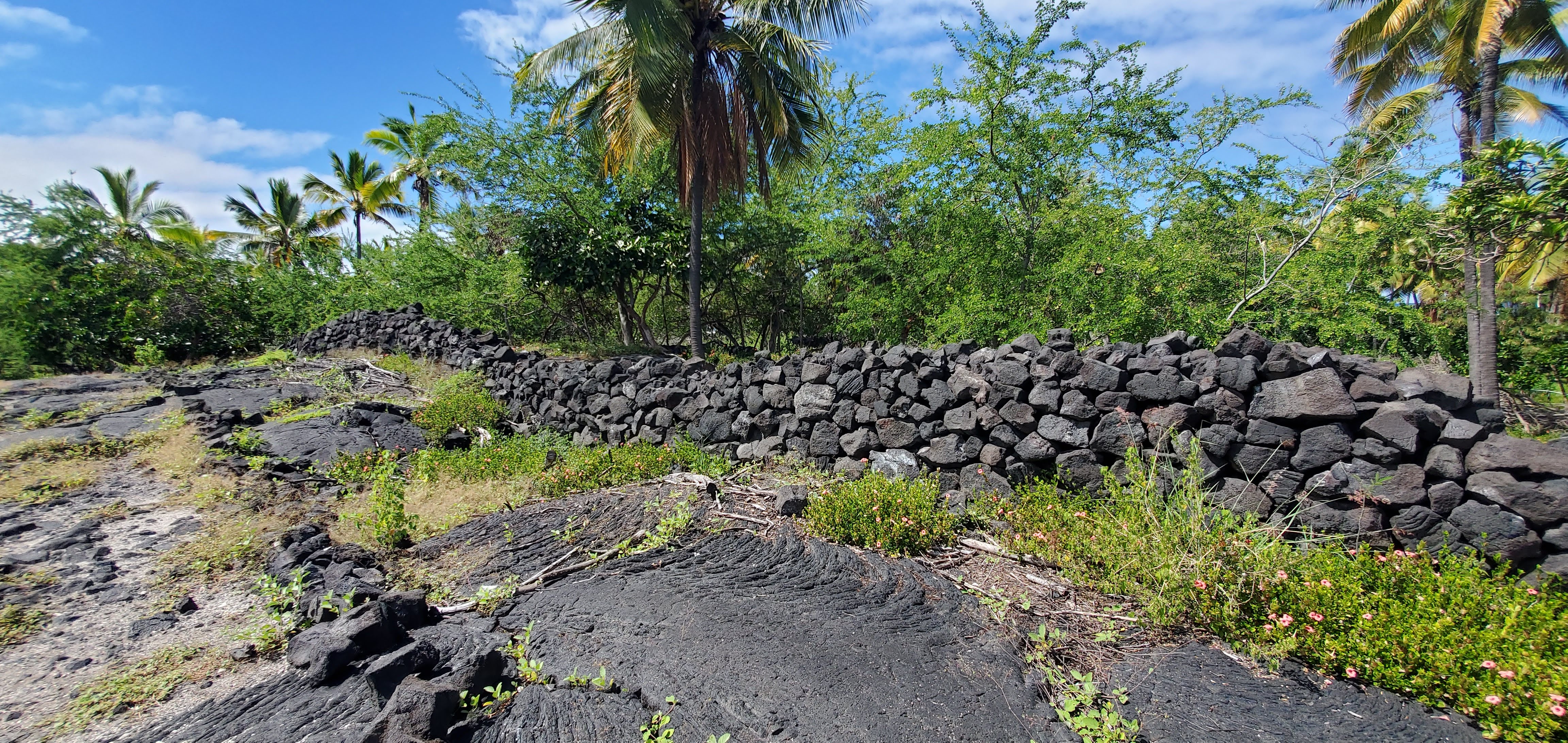
D - ʻŌmaʻo HeiauA large pile of rubble and an upright standing stone is all that remains of the ʻŌmaʻo heiau (temple). 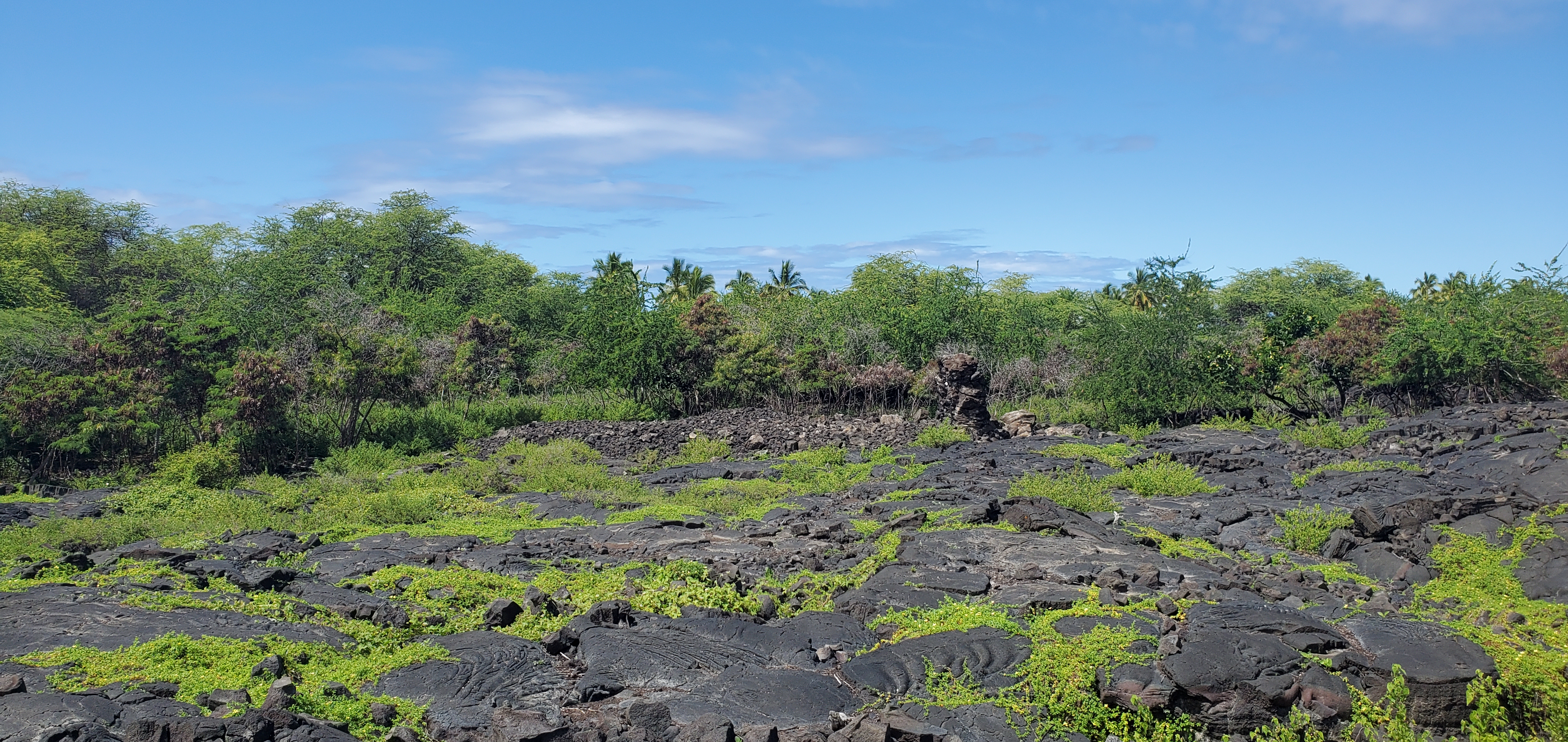
E - Kēōkea HōluaThe Kēōkea Hōlua is one of two hōlua slides that you can view from the 1871 trail. 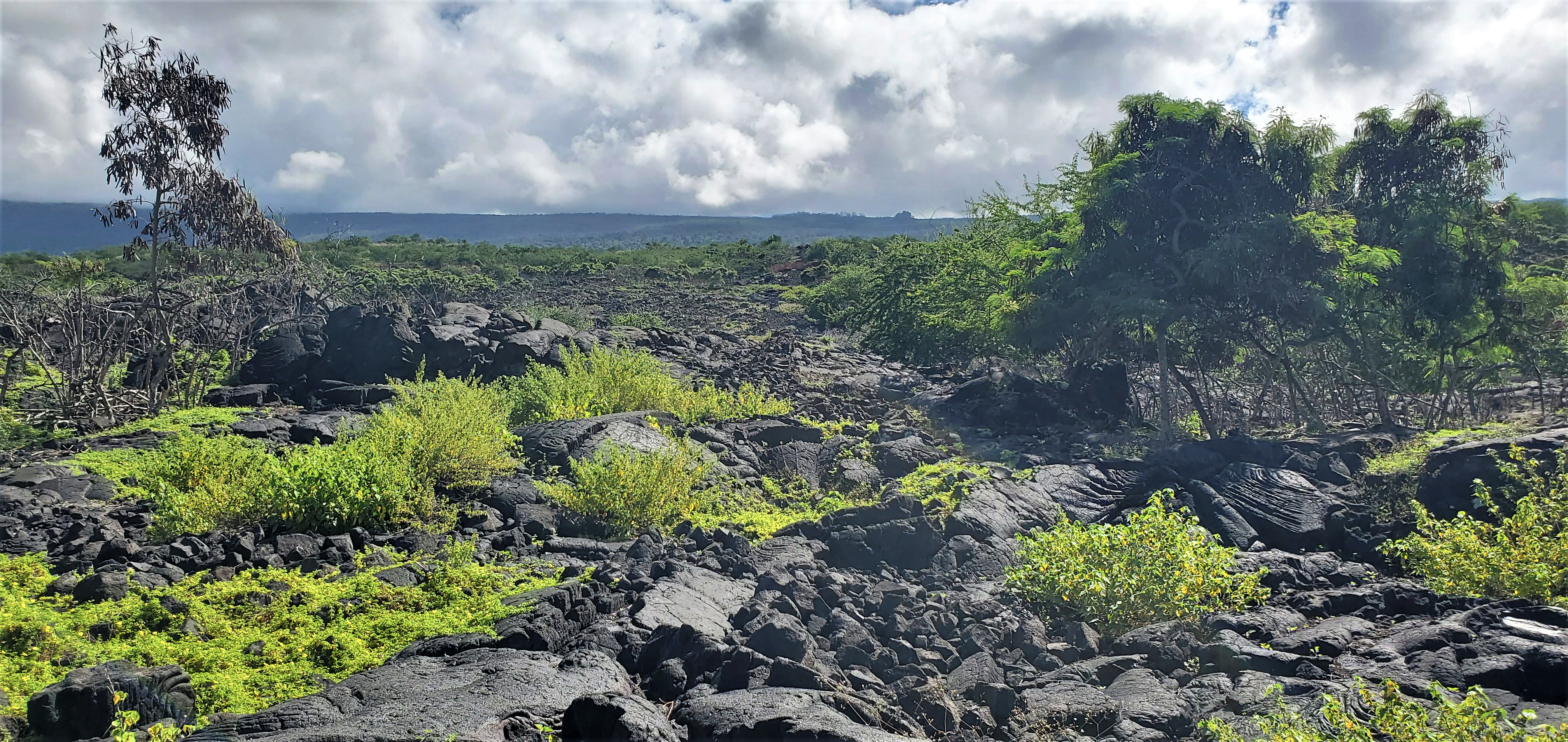
F - Animal PenThis high-walled animal pen is indicative of changing times when goats where introduced to the island. 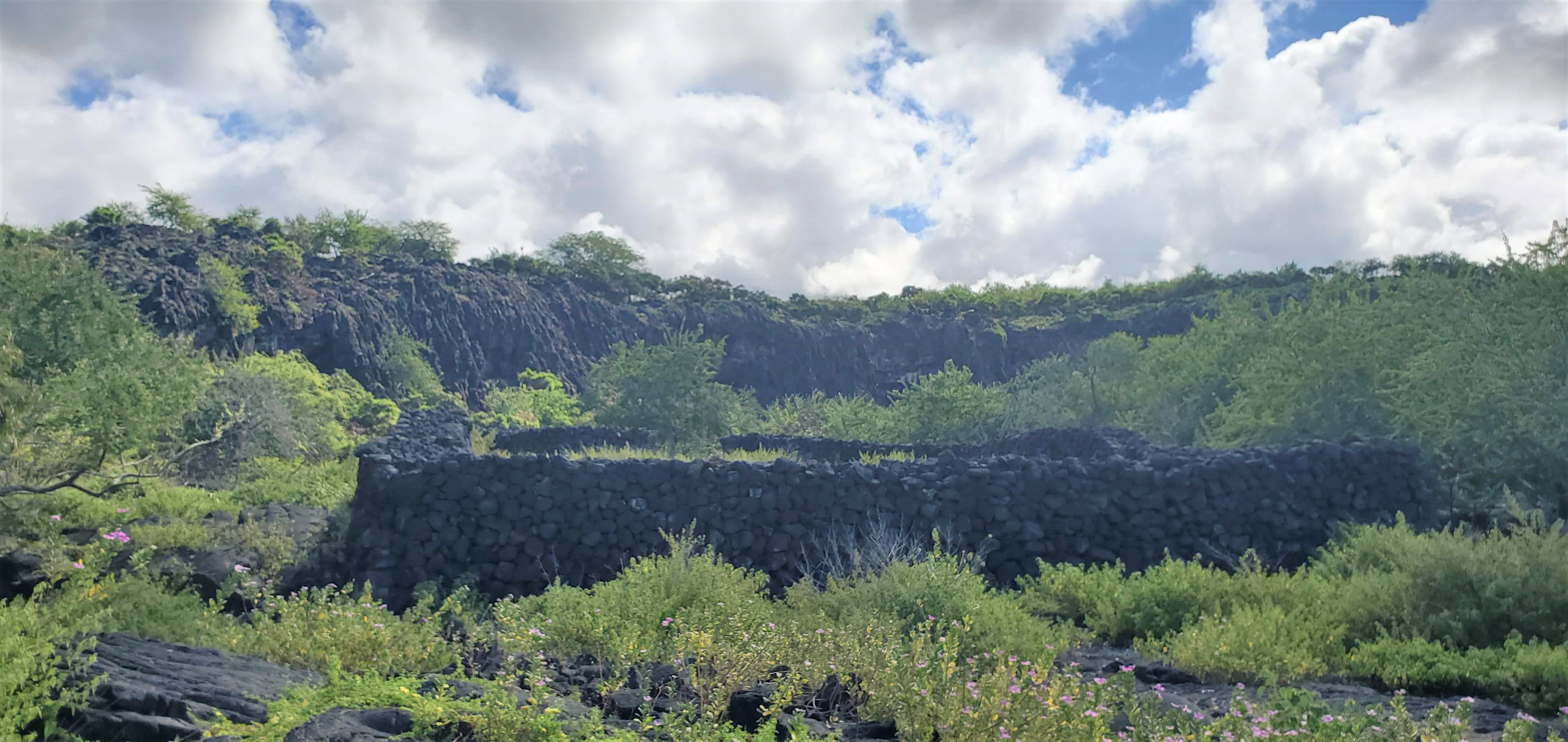
G - Alahaka Heiau & Keanaeʻe CliffsA large pile of stone rubble is all that remains of this once impressive heiau (temple) with natural amphitheater of lava cliffs behind. 
H - Alahaka RampSee the Alahaka Ramp on the 1871 Trail section of the Ala Kahakai National Historic Trail. Imagine trying to scale this 20-foot cliffside without the improvement of this constructed stone ramp! 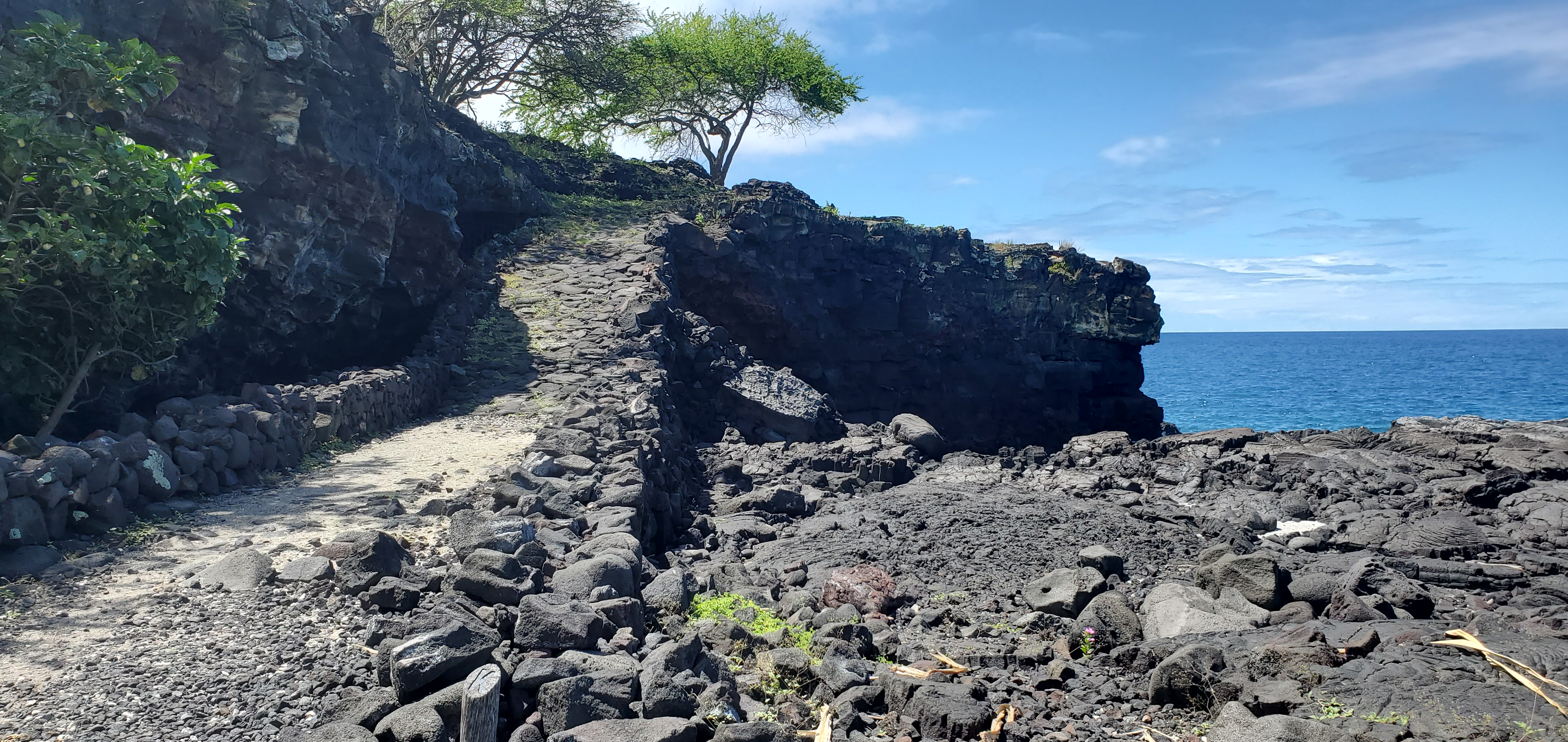
Hale o Kapuni Heiau
I - Waiū o Hina Lava TubeThe Waiū o Hina lava tube was formed by molten lava flowing from Mauna Loa, the largest active volcano on earth. 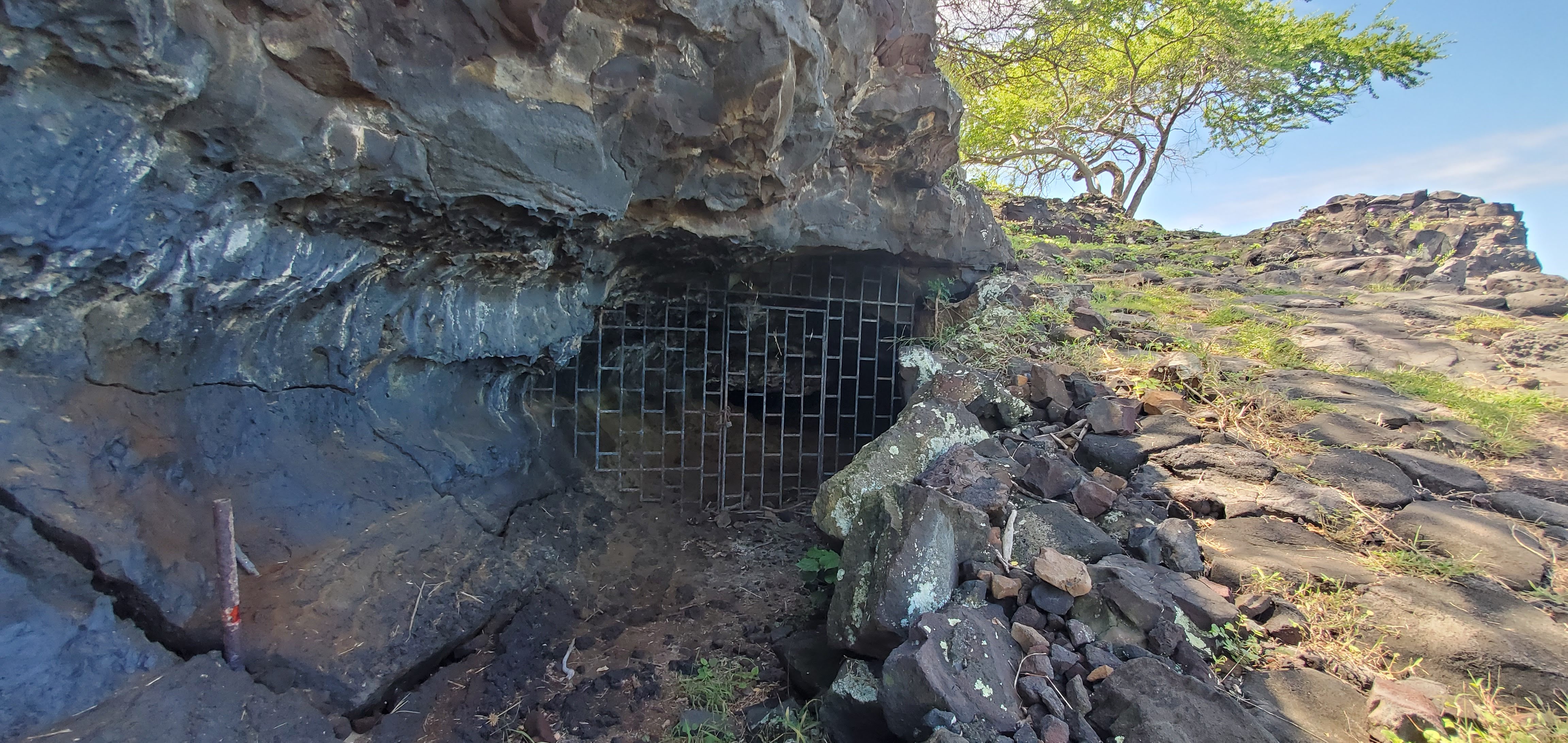
J - Shoreline Viewpoint on the 1871 TrailA gorgeous view of the expansive South Kona coastline and Keanaeʻe Cliffs awaits those who make the trek out to the top of the Alahaka Ramp on the 1871 Trail. 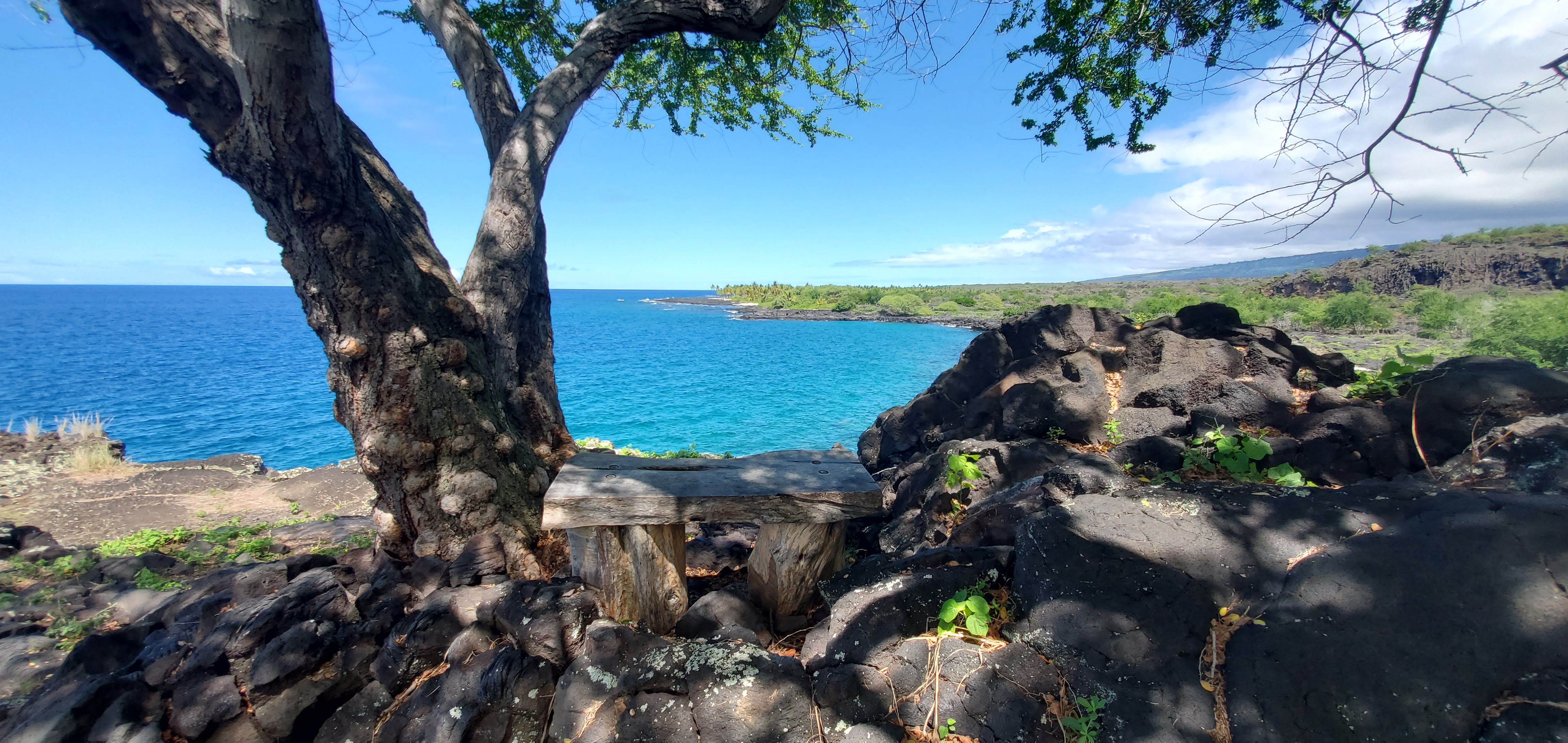
John Young Homestead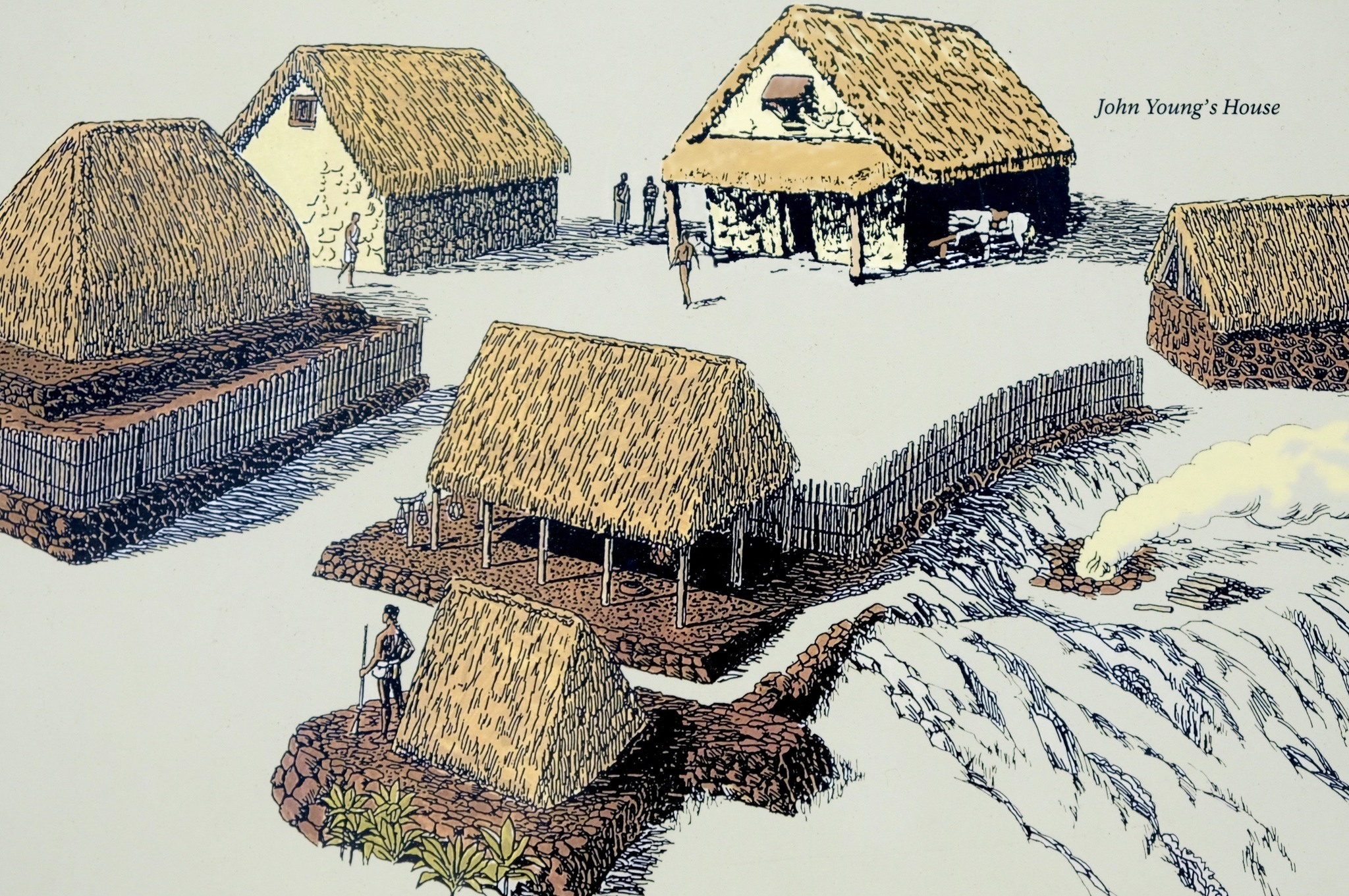
Junction of the 1871 Trail & Coastal TrailThe junction with the Coastal Trail allows you to take this shoreline route to the Picnic Area. 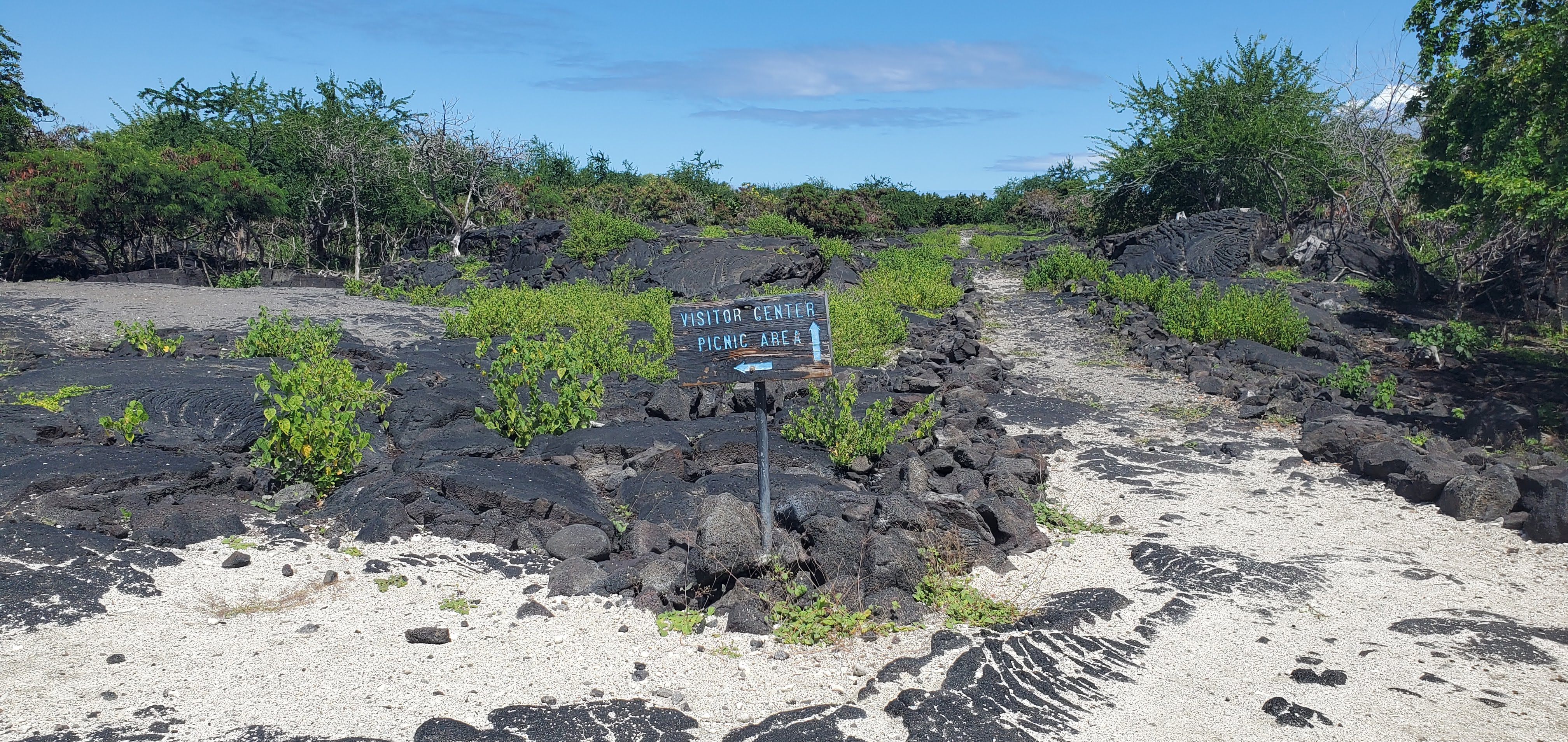
K - ʻĀhinahina Point - John Ahu ComplexThe John Ahu House Complex at ʻĀhinahina point shows a prime location for housing in the late 1800s to early 1900s. 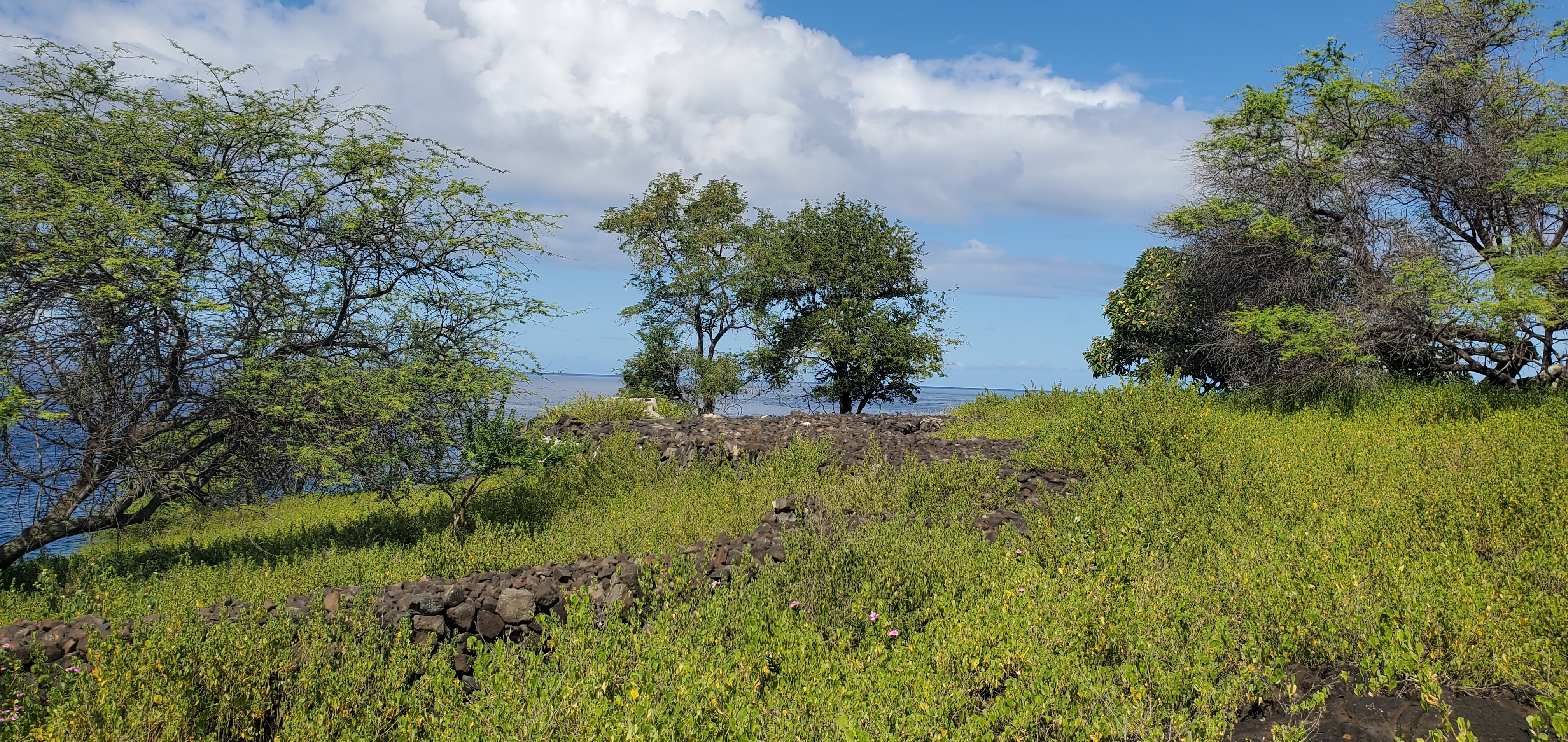
L - Kiʻilae VillageKiʻilae Village offers a glimpse into the past, when Hawaiʻi was changing rapidly, but still supported traditional aspects of daily life. 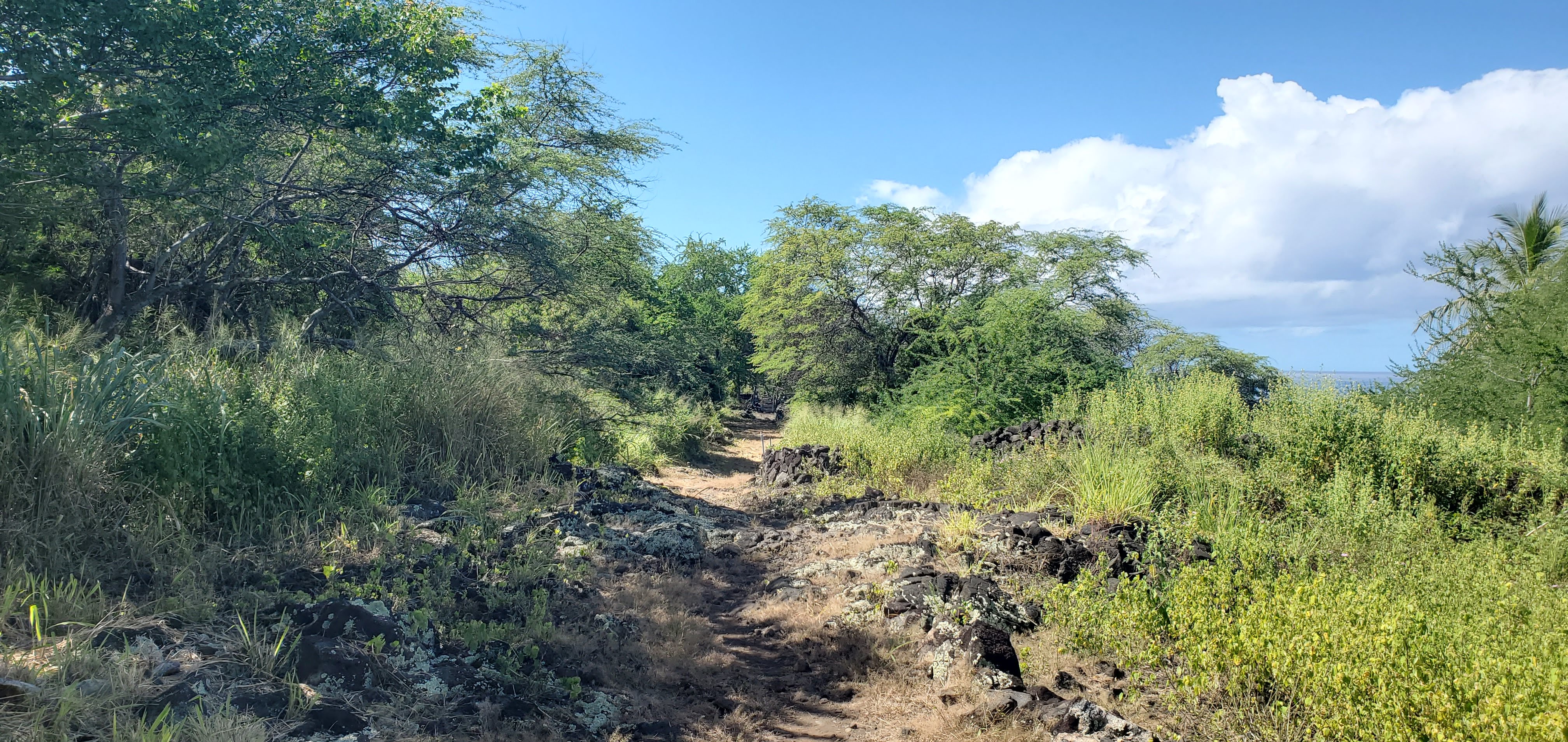
M - Kahikina House SiteThis house site was the home of the Kahikina family who were expert fishermen. 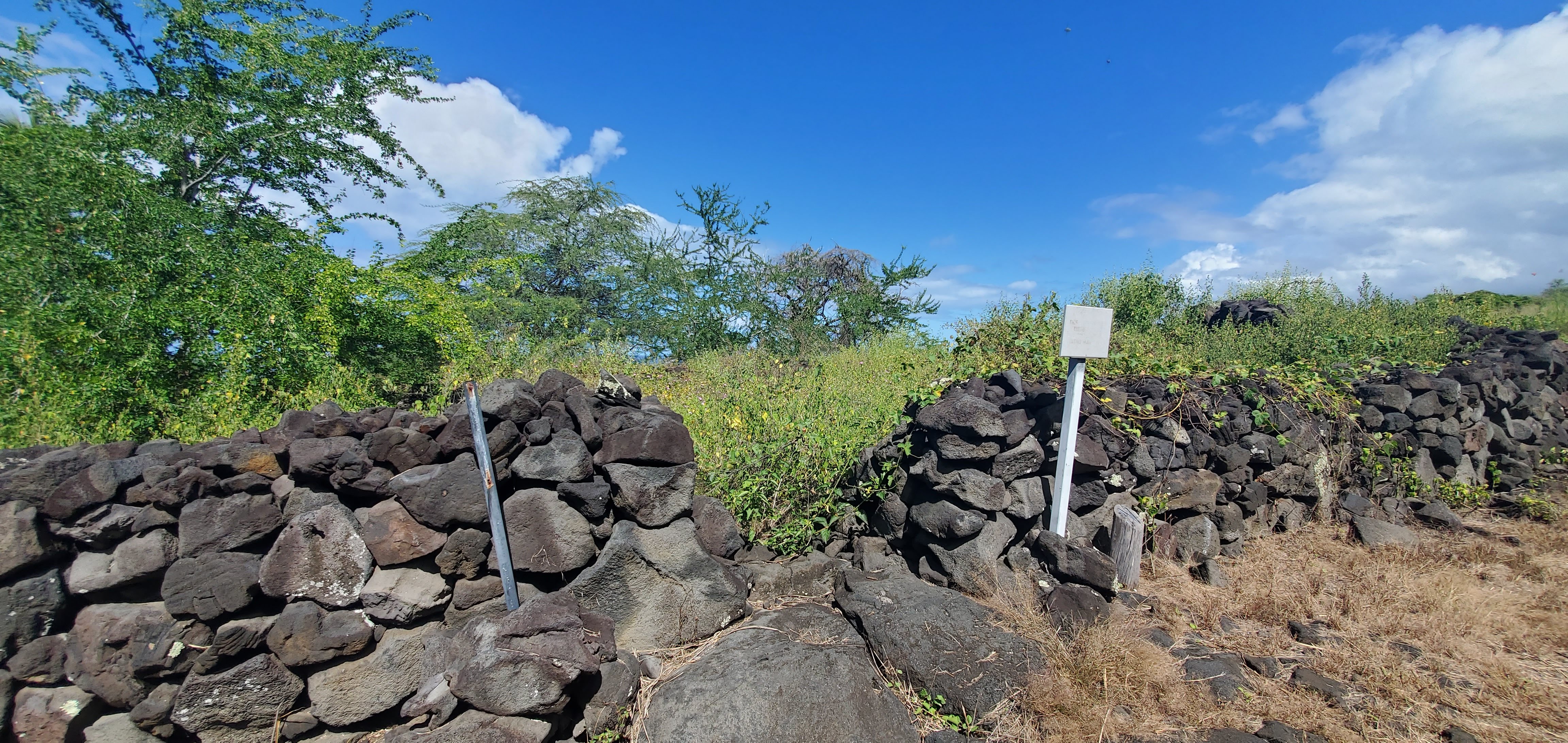
Mailekini Heiau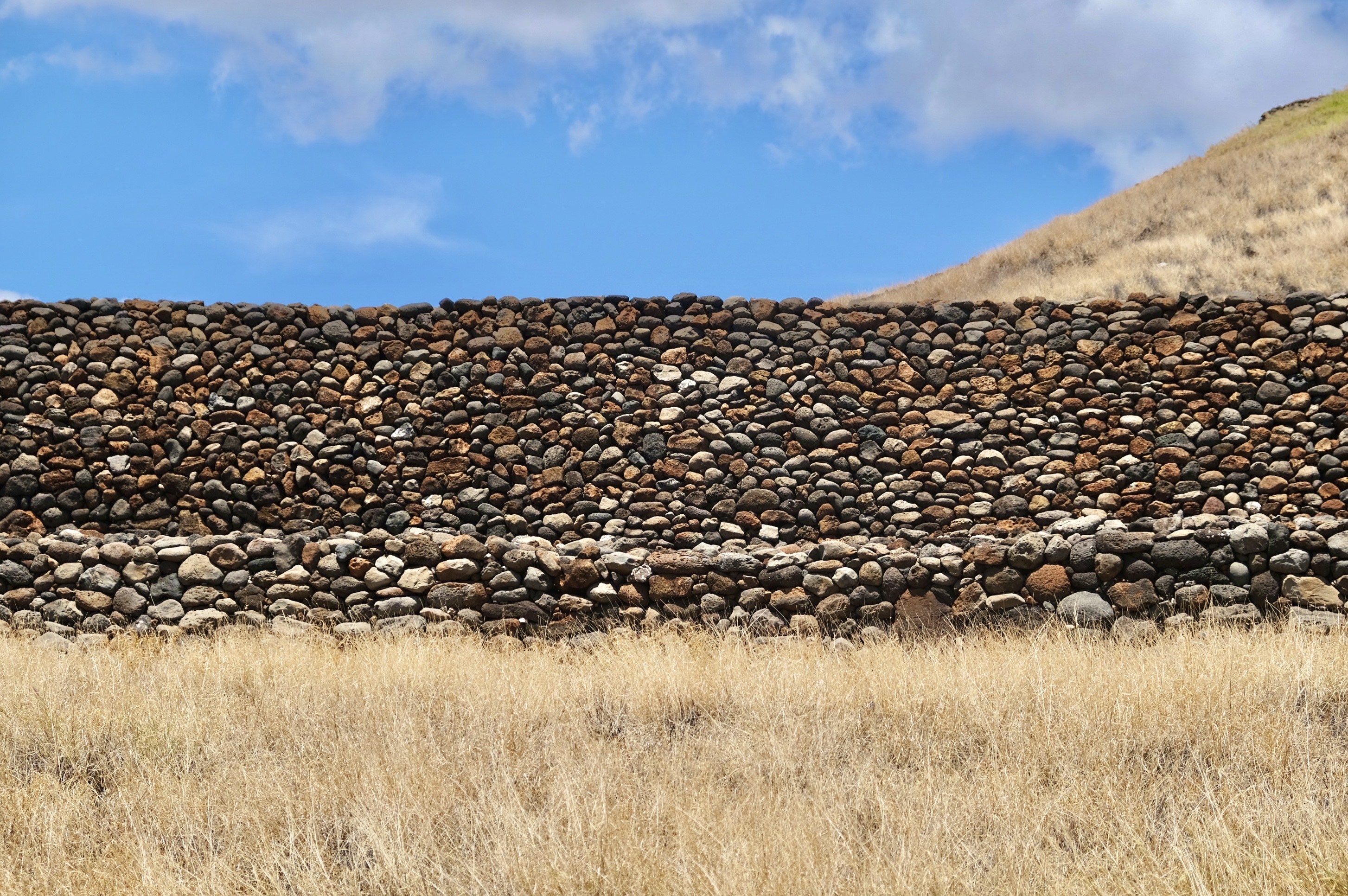
N - Mauka-Makai TrailThis old mauka-makai trail connected Ki'ilae villagers with upland gardens. 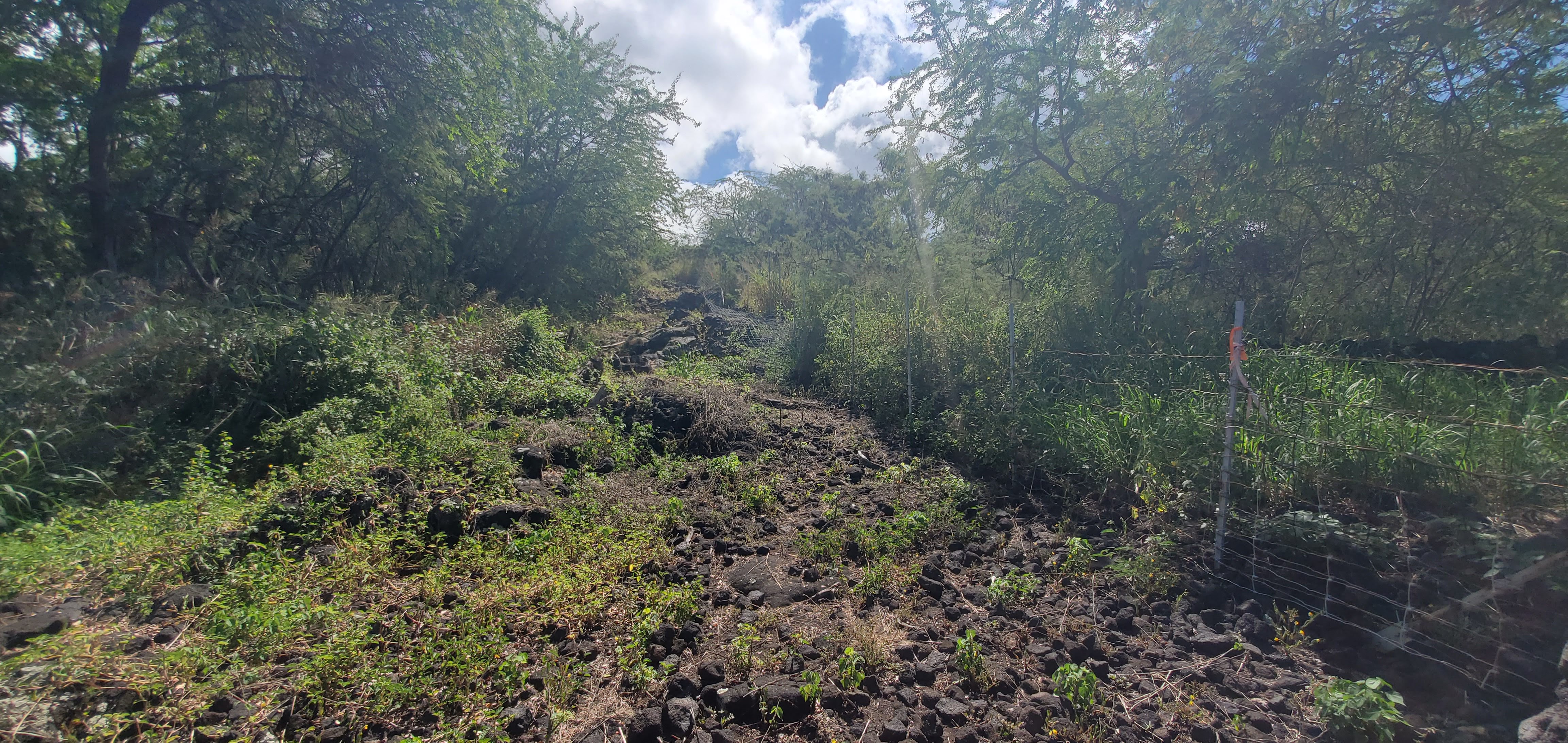
O - Pā HaleThe pa hale (house sites) of Ki'ilae village show a more traditional way of life. 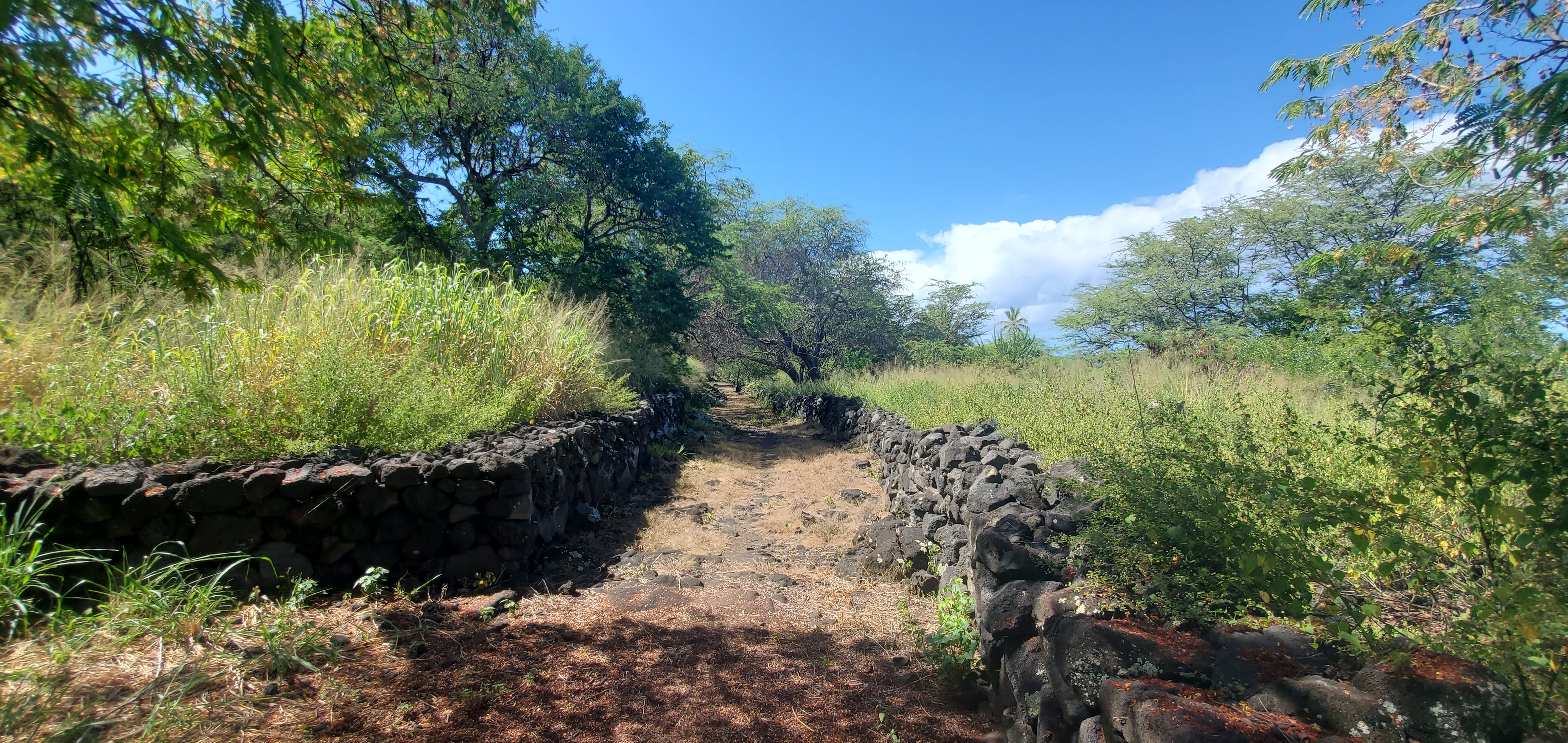
Pelekane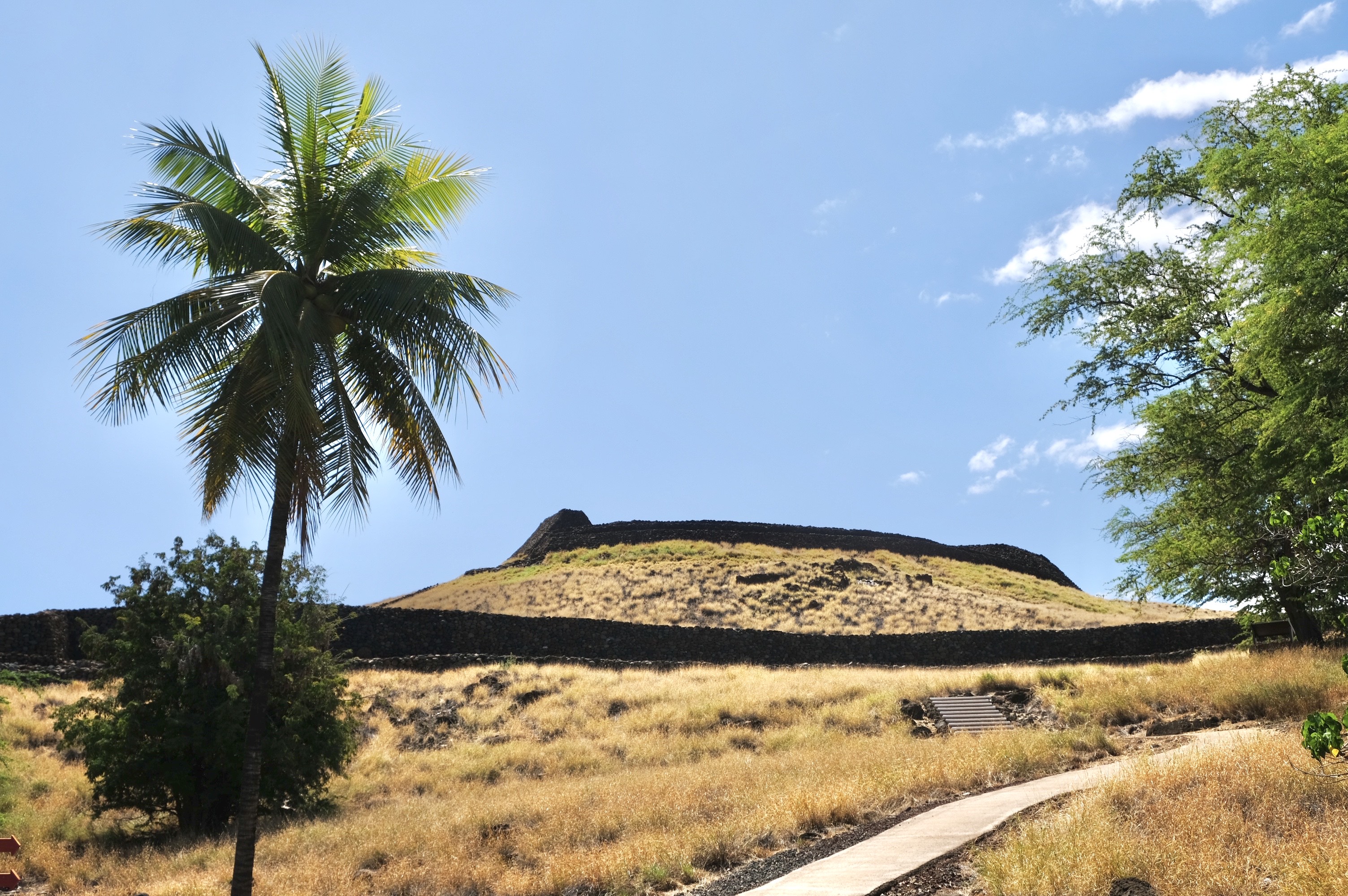
Puʻukoholā Heiau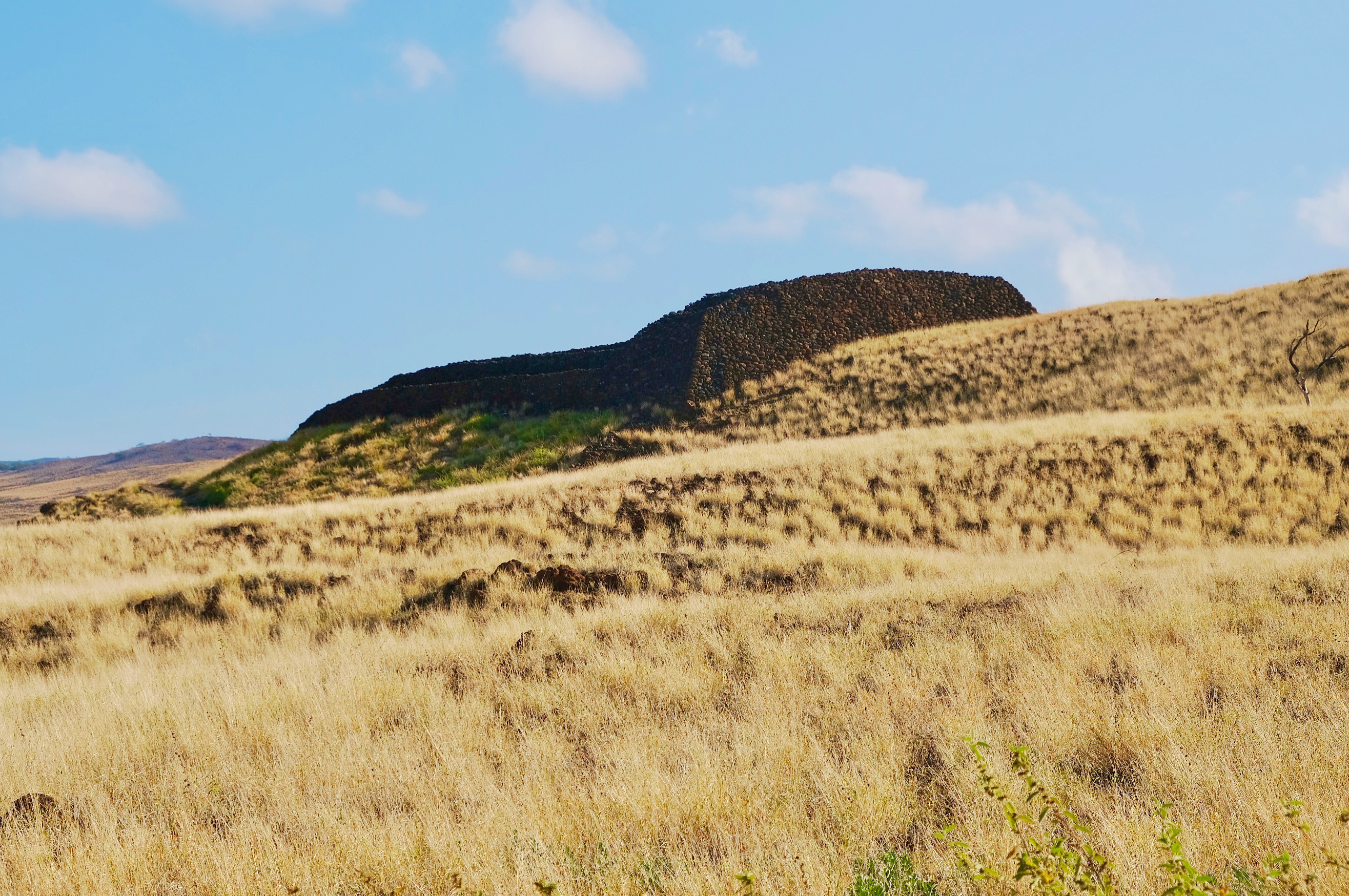
Puʻukoholā Visitor Center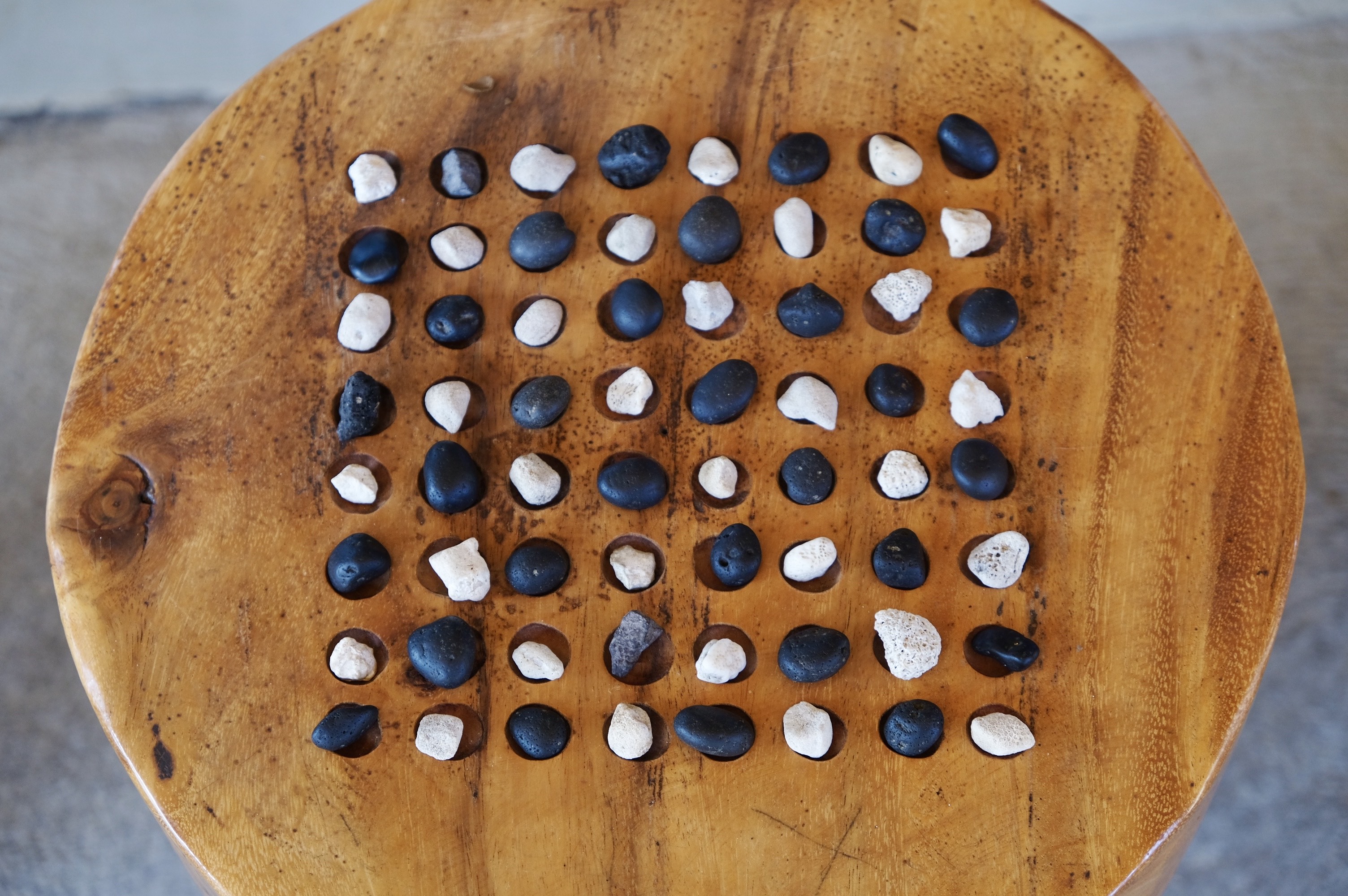
|
| Visitor Centers | Count: 0
|
| Things to do | Count: 1
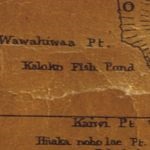
|
| Tours |
Count: 5
Puʻuhonua — 1871 TrailPuʻuhonua O Hōnaunau — See the convergence of ancient and historical times as you step back in time with us, walk in the footsteps of the ancestors, and explore the rugged lava shoreline of the South Kona Coast on the 1871 Trail. This is an out-and-back trail with a roundtrip total of two miles. The trail traverses over rugged lava with few opportunities for shade. Sturdy shoes, sun protection, and water are recommended. Please stay on the trail at all times and do not disturb any archeological sites. Puʻuhonua — Meet the KiʻiThe kiʻi at Puʻuhonua o Hōnaunau National Historical Park attract visitors from all over the world. Take a journey around the Royal Grounds and meet the kiʻi of Puʻuhonua o Hōnaunau. Learn about what kiʻi are, the history of kiʻi at Puʻuhonua o Hōnaunau, and the forms of the akua (gods) that they represent. Puʻuhonua — MuralPuʻuhonua O Hōnaunau National Historical Park — Listen to a brief description of how our ancestors settled these islands and thrived in isolations for hundreds of years before outside contact. Puʻuhonua — Royal GroundsPuʻuhonua O Hōnaunau National Historical Park — Take a step back in time to ancient Hawaiʻi and walk in the footsteps of the ancestors. Explore the Royal Grounds which were once reserved for the chiefdom of Kona and pass beyond the Great Wall into the Puʻuhonua, where people found refuge during war or after breaking a kapu (religious law). This self-guided walking tour is about half of a mile long. The terrain is a mixture of crushed coral sand and lava rock. Puʻukoholā Heiau — Audio TourPuʻukoholā Heiau National Historic Site — A walking audio tour around the park, 1/2-mile in length, with stops at all the major historic sites. |
| Articles |
|